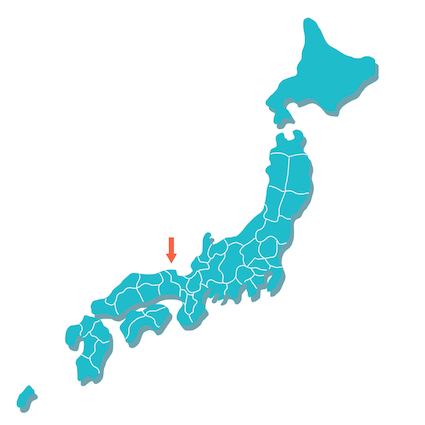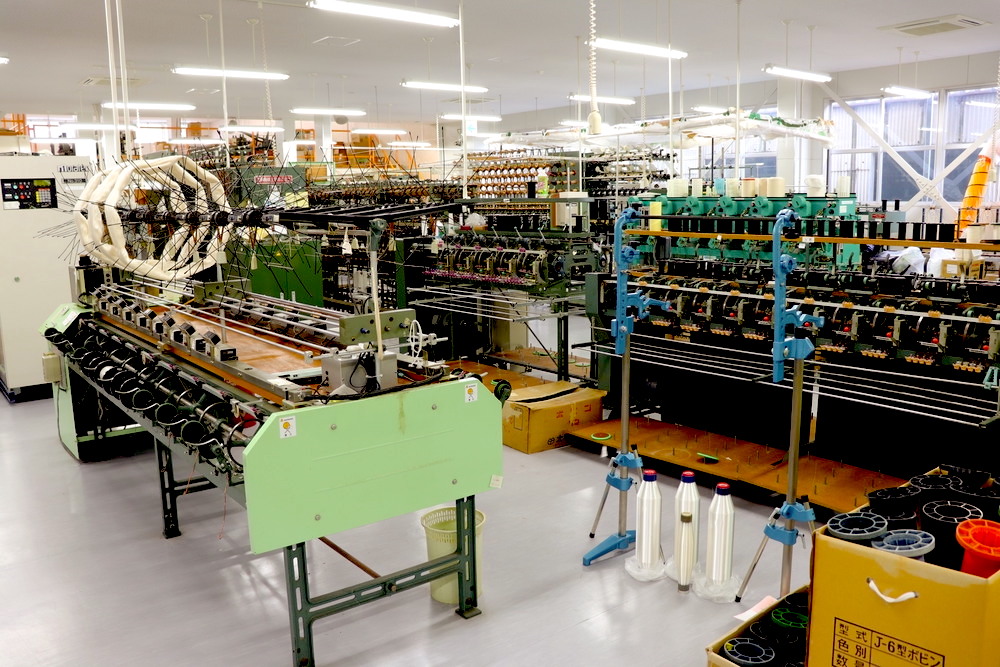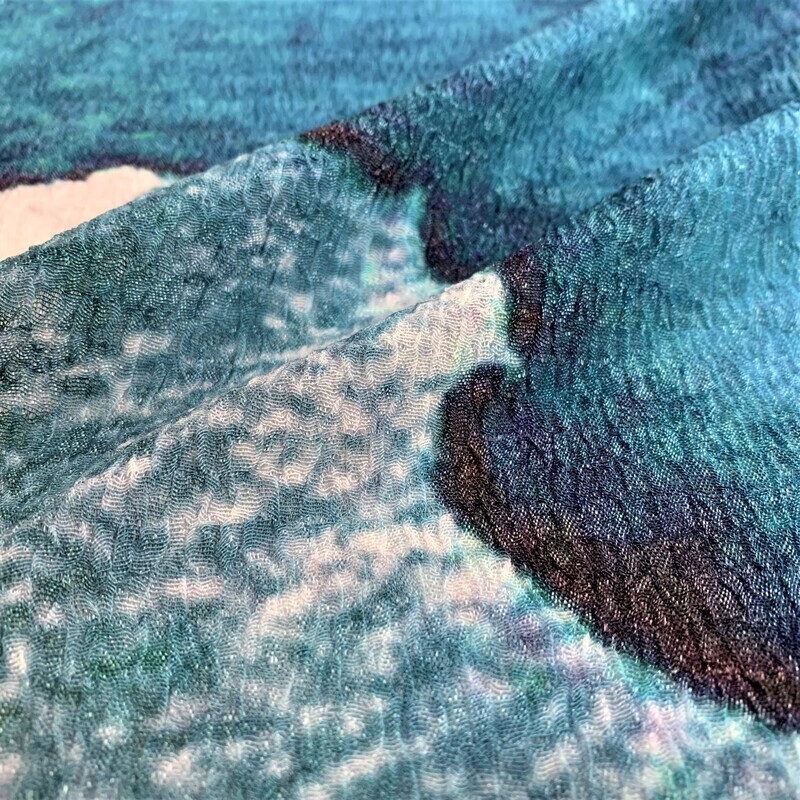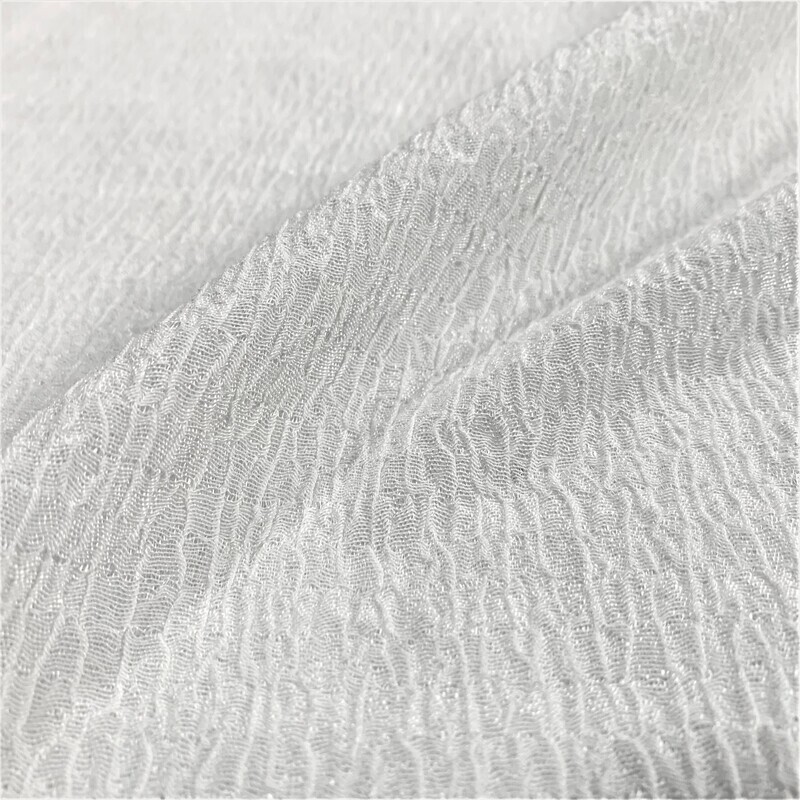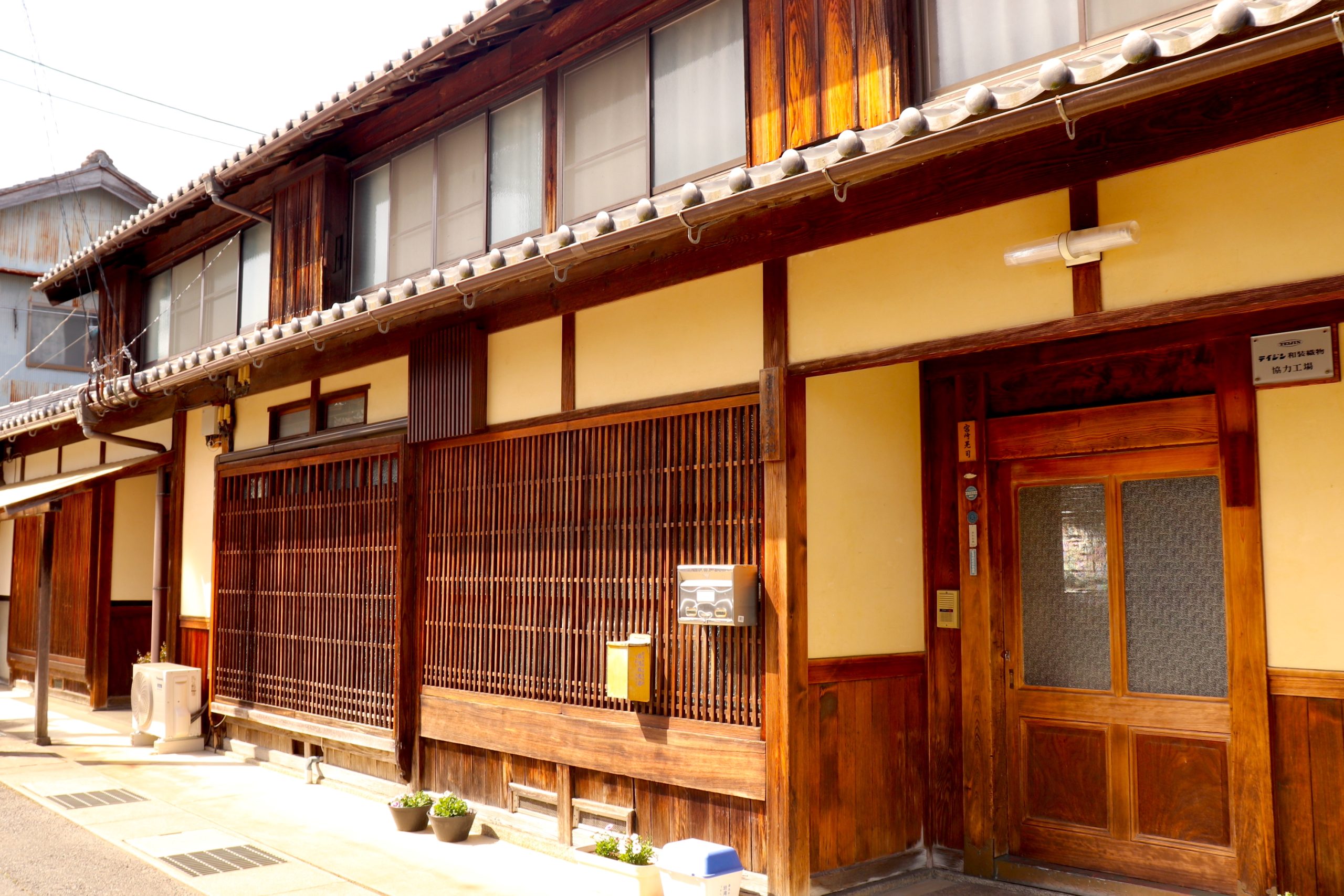丹後地方は日本で最大の絹織物の産地であり、日本の着物の約70%をこの地域で支えています。織物業は農業とともに、長い間人々の生活を支えてきました。この地域の絹織物の歴史は古く、約1300年前の奈良時代には既に織物が盛んに作られていたとされています。聖武天皇に絹織物が献上されたことが記録に残っており、正倉院にも保存されています。伝統的な技法である「縮緬」は特に有名ですが、この織物は江戸時代に入ってから生まれました。
近代に入ると、丹後地方のテキスタイル産業は大きな変革を経験します。産業革命や西洋の影響を受け、新しい機械や技術が導入されていきました。明治時代にはジャカード織機が普及し、紋紙を使用する技術が本格化しました。ドイツやスイスからは発動機や力織機も導入され、生産性が向上し、より多くの人々に丹後の織物が届くように。戦争や経済の変動により一時は衰退期を迎え、高度経済成長期にはまた最盛期を迎えますが、その後は和装需要の減少や海外製の安価な縮緬などの輸入増加とともに徐々に生産量が落ち込んでいき、これが近年の課題となっていました。しかし現代では、伝統の技術と現代のデザインの融合を図りながら新たな魅力を生み出し、更に新しい産地へと進化をしています。
The Tango region is the largest silk textile production area in Japan, supporting approximately 70% of the country's kimono production. The textile industry has been intertwined with agriculture, sustaining people's livelihoods for a long time. The history of silk weaving in this region dates back to ancient times, with records indicating that textiles were already being produced vigorously during the Nara Period, about 1,300 years ago. There are historical records of silk textiles being offered to Emperor Shomu and stored in the Shosoin Repository. The traditional technique of “Chirimen" is particularly famous, although this fabric emerged during the Edo Period.
In modern times, the textile industry in the Tango region has undergone significant transformations. Influenced by the Industrial Revolution and the Western world, new machinery and technologies were introduced. During the Meiji Period, Jacquard looms became widespread, and the use of pattern cards became more prevalent. Engines and power looms were also imported from Germany and Switzerland, increasing productivity and enabling wider distribution of Tango textiles. The industry experienced a decline during times of war and economic fluctuations, followed by a period of prosperity during the high economic growth era. However, in recent years, production has gradually declined due to a decrease in demand for traditional Japanese clothing and an increase in imported, inexpensive Chirimen fabrics. Nonetheless, in the present day, manufacturers in the Tango region are striving to create new appeal by combining traditional techniques with modern designs, and they are evolving toward new production areas.
↓京都府織物・機械金属センター (Kyoto Prefectural Institute for Northern Industry)
地域の職人やデザイナーたちは、伝統的な技法を大切にしながらも、斬新なアイデアや素材の活用に取り組んでおり、これにより多様なニーズに応えることができる幅広い製品が生み出されています。パリでは、2023年7月4日~6日にかけて、24~25年秋冬向けのファッションイベント「プルミエール・ヴィジョン・パリ(Première Vision Paris)」が開催されましたが、サステイナブルな素材や製造プロセスを取り入れたコレクションが再度注目を集めました。丹後では、そうしたサステイナブルなテキスタイル作りに取り組んでいるメーカーが数多くあります。
◾️宮眞 (miyashin)
◾️臼井織物 (Usui Orimono co.,ltd.)
◾️京都府織物・機械金属センター (Kyoto Prefectural Institute for Northern Industry)
◾️川端デニム製作所 (Kawabata Denim Factory)
◾️Bird fab studio co,ltd
Local artisans and designers are committed to preserving traditional techniques while embracing innovative ideas and utilizing various materials. As a result, a wide range of products that can meet diverse needs are being produced. In Paris, during the "Première Vision Paris" fashion event held from July 4th to 5th, 2023, collections incorporating sustainable materials and manufacturing processes garnered attention once again, indicating a growing interest in sustainable textile production. In the Tango region, there are numerous manufacturers actively engaged in such sustainable textile manufacturing.
↓臼井織物 